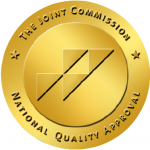Eye movement desensitization reprocessing, or “EMDR,” is an original psychological approach to treating individuals with trauma. Francine Shapiro, Ph.D., is the creator of EMDR, a “psychotherapy treatment that was originally designed to alleviate the distress associated with traumatic memories.” This form of therapy is well researched, and it is “now recommended as an effective treatment for trauma in the Practice Guidelines of the American Psychiatric Association, the World Health Organization and those of the Departments of Defense and Veteran Affairs.” EMDR has the potential to heal trauma and release the emotions and memories that hold individuals back.
How Does EMDR Work?
In EMDR therapy, a medical professional facilitates patients in “accessing and processing of traumatic memories and other adverse life experiences to bring these to an adaptive resolution.” The goal of EMDR is to relieve trauma and reformulate negative thoughts. In a clinical setting, a therapist guides the patient to draw on an emotionally triggering memory while also observing external stimuli. The external stimuli process usually involves the therapist directing lateral eye movements. External stimuli are not restricted to lateral eye movements, although they are the most common; auditory stimulation might also be used as external stimuli in EMDR. Shapiro’s EMDR model is broadly described as the client responding “to emotionally disturbing material in brief sequential doses while simultaneously focusing on external stimuli.”
Focusing on the external stimuli while reflecting on aspects of the triggering event involves the patient’s eyes tracking the therapist’s hand as “it moves back and forth across the client’s field of vision.” The EMDR research team at Harvard believes that because of the connection with the “biological mechanisms involved in Rapid Eye Movement (REM) sleep, internal associations arise, and the clients begin to process the memory and disturbing feelings.”
Goal of EMDR Therapy
The logic behind EMDR is that by accessing triggering memories, patients’ associated thought processes can be reestablished with new thoughts and feelings. By experiencing the therapeutic approach of EMDR, patients can replace triggering feelings associated with the memory with open and adaptive thoughts. EMDR allows patients to process painful memories in a safe, supportive space and reflect on the memory with a new perspective. The overall goal is that “these new associations are thought to result in complete information processing, new learning, elimination of emotional distress, and development of cognitive insights.”
The newly redesigned cognitive insights arise from following a three-pronged protocol:
1. The past events that have laid the groundwork for dysfunction are processed, forging new associative links with adaptive information.
2. The current circumstances that elicit distress are targeted, and internal and external triggers are desensitized.
3. Imaginal templates of future events are incorporated to assist the client in acquiring the skills needed for adaptive functioning.
How Effective is EMDR Therapy?
Studies over the years have shown that EMDR can expedite healing and that the benefits of the treatment surface faster than other forms of psychotherapy. For other psychotherapies, it may take years to notice healing, but EMDR is unique in that treating severely attached emotional pain does not require a lot of time. One reason EMDR produces faster results is because of who controls the healing process. In talk therapy, for example, the patient usually heals with the help of the clinician’s interpretations, whereas in EMDR, clients can activate their innermost emotions and allow their natural healing process to take over.
There have been over 30 controlled outcome studies on EMDR therapy. Positive results from studies demonstrate that up to 90% of single-trauma victims no longer suffer from post-traumatic stress disorder (PTSD) after just three 90-minute sessions. Another study “funded by the HMO Kaiser Permanente, found that 100% of the single-trauma victims and 77% of multiple trauma victims no longer were diagnosed with PTSD after only six 50-minute sessions.” On top of that, 77% of veterans were relieved of their PTSD in 12 sessions.
With statistics like these and results changing peoples’ lives for the better, treatment centers must consider implementing alternate forms of therapy such as EMDR. It is promising that “…over 100,000 clinicians throughout the world use the therapy” and that “…millions of people have been treated successfully over the past 25 years.”
At Boardwalk Recovery Center, we stay up to date on successful psychological studies and investigate the best approaches to treating our clients and assisting their recoveries.
Life can be good again and we’d like to show you how.






